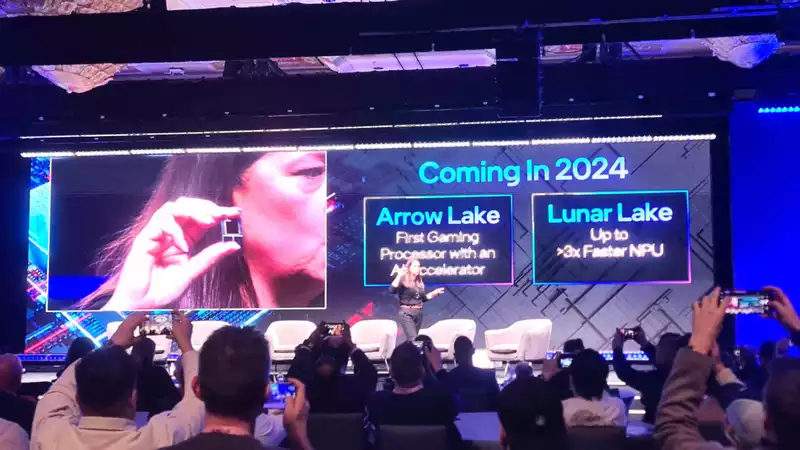Along with the promise that its next-generation desktop CPU, Arrow Lake, will hit the market in late 2024, Intel has announced that another new architecture will also arrive this year: Lunar Lake, an evolution of Meteor Lake that is squarely aimed at being the lowest power possible. Intel also claims that it will significantly improve the IPC (instructions per cycle) of the CPU core and increase the AI performance of the GPU and NPU by up to 3X.
Despite the endless and somewhat repetitive talk about AI at this year's CES event, Intel has clearly been busy of late, pushing CPU design and chip manufacturing technology. The recently announced Core Ultra series of CPUs for notebooks is based on the Meteor Lake design, in which the entire chip is composed of multiple tiles: compute, graphics, system, I/O.
For this particular processor, Intel will manufacture the compute tile on the Intel 4 process node and TSMC will manufacture the rest; Meteor Lake will join (or possibly replace) Lunar Lake at some point in 2024, Compute Tile will undergo a serious overhaul. The extent of the upgrade is still unknown, but Intel has promised significant improvements in the IPC of the CPU cores.
IPC is a measure of the number of instructions that can be processed in one clock cycle, and varies by instruction as well as architecture; a higher IPC means that the clock speed does not necessarily need to be increased to achieve higher performance, and as a result the chip runs slower, operate with less power and generate less heat.
"Power and heat have been a longstanding concern for Intel, so any improvement in this area is most welcome.
Another major improvement in Lunar Lake appears to be in the graphics tiles and NPU (Neural Processing Unit) inside the system tiles (commonly referred to as SoC) At the Client Computing keynote event at CES 2024, Intel s Senior Vice President Michel Holthaus claimed that Lunar Lake will offer up to 3x AI performance with GPUs and NPUs.
I am less interested in NPU improvements than GPUs. This is because there is only one way to get such a big improvement in a graphics chip: more cores running at higher clock speeds. Intel's latest GPUs have matrix cores, similar to Nvidia's Tensor cores, which handle AI calculations; in PC games, they are used for upscaling and, in Nvidia's case, machine learning frame generation.
Assuming Holthaus used the Core Ultra chips with Meteor Lake as a reference point for its 3x or better AI performance claim, it bodes well for how well future lightweight laptops will be able to handle modern games. It won't necessarily improve rendering power, but with good upscaling, that shouldn't be too much of a problem.
Holthaus also briefly brandished a sample of Lunar Lake, and the crowd of visitors scrambled to get a decent picture of it. From where Jacob was sitting, it looked fairly compact, with what appeared to be two RAM chips embedded in a CPU package; Lunar Lake may be set up for low-power laptops, but if it turns out to be a nice little chip, it could be used in one or more handheld PCs if it turns out to be a great little chip.
And that would be very nice.


Comments